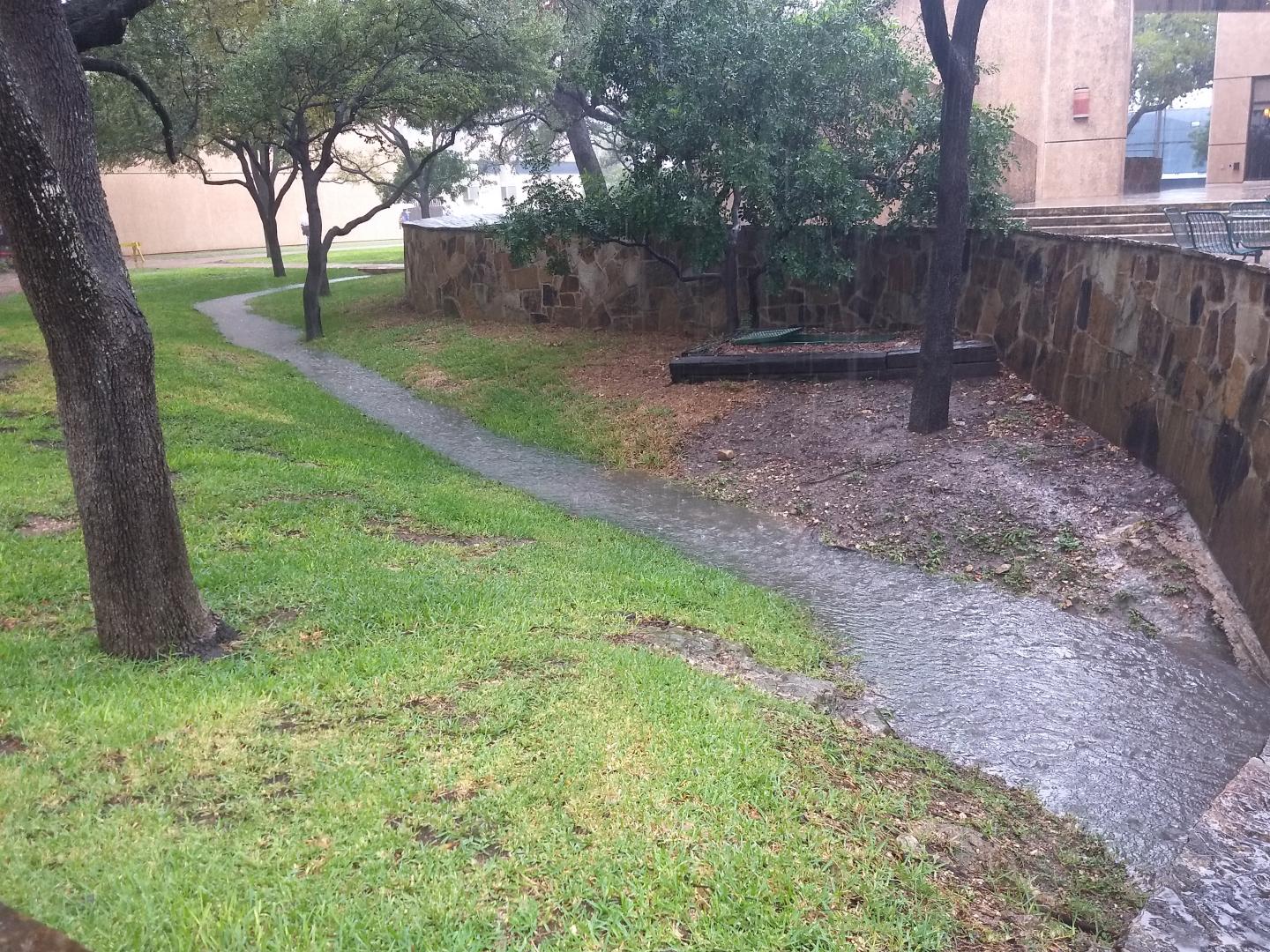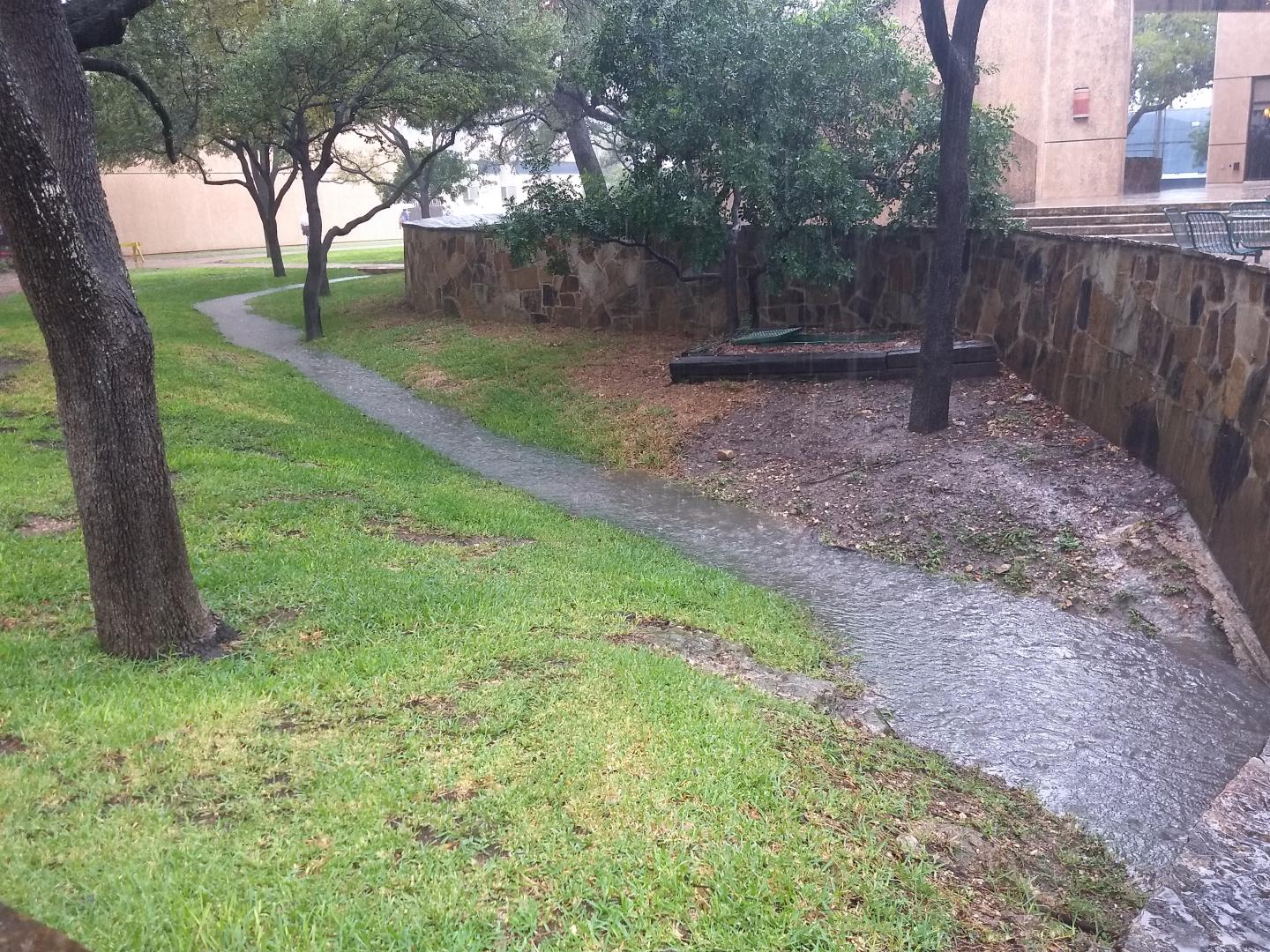
Credit: UTSA Courtesy Photo
(San Antonio, May 29, 2018) — The University of Texas at San Antonio (UTSA) has received a three-year, $1,057,401 grant through the City of San Antonio's Proposition 1 Edwards Aquifer Protection Program to upgrade storm water management facilities on its Main Campus. The Fu UTSA's ability to remove pollutants from storm water run-off and is expected to provide best practices for the long-term management of storm water in aquifer recharge zones.
UTSA will use low impact development to treat runoff from 9.5 acres of campus rooftops and parking lots, reducing the amount of pollutants entering waterways around the Main Campus. These surfaces often contain contaminants such as oil, bacteria, fertilizers, gasoline and sediment. Heavy rains compound the impact, washing contaminants into the water supply.
"When the Main Campus was constructed in the early 1970s, it was designed to move storm water off site as quickly and efficiently as possible using the best practices in the industry at the time," said Brian Laub, UTSA assistant professor of Environmental Science, who is leading the project with Janis Bush, professor and chair of the UTSA Department of Environmental Science and Ecology, and Mei Lani May, a senior environmental planner in the university's Office of Facilities.
When the Main Campus first opened, storm water was conveyed away from the property through a system of storm drains and open swales that lead to Leon Creek.
Modern development of the campus, however, necessitates a new approach.
Drawing on the principles of low impact development, UTSA will use nature as a model to remove the pollutants from storm water at its source. Low impact development features scattered throughout the site will conserve natural areas, maintain the natural flow of water wherever possible, capture water to let it seep slowly into the ground and filter out contaminants as it recharges the Edwards Aquifer.
"Today, of the estimated 93,300 square feet of combined rooftop surface for the Physical Education building and the Convocation Center, which both opened in 1975, only 0.13 percent of the stormwater is directed to a vegetated area before going through the storm water system via roof top drains and a French drain," said May.
The funding will be used to retrofit rooftops from the Physical Education, Student Union and H-E-B Student Union buildings and a portion of the sidewalks, streets and parking lots in the area with water quality treatment.
To assess the impact of the upgrades, the UTSA team will collect water quality samples from storm water runoff before and after the construction project to determine the effectiveness of treatment facilities to remove pollutants. If the facilities prove successful, the project will serve as a model for designing other storm water projects across the Edwards Aquifer recharge zone and throughout San Antonio.
The project will also provide UTSA science and engineering students with an experiential learning opportunity. Faculty and staff involved in the project will collaborate to provide an outdoor classroom that will provide education and academic research on Low Impact Development, indirectly benefiting Edwards Aquifer water quality by increasing the number of students studying water quality issues specific to the Edwards Aquifer.
"We are using this project as a living laboratory" said Bush. "We are excited to have on our campus a project that will allow students, faculty, staff and local community members to see and learn about what we can do as a community to ensure our water source is protected. And we will be collecting valuable data on water quality that can be used in the future to inform management decisions" said Bush.
###
This million dollar project is funded through the City of San Antonio's $10 million Proposition 1 component supporting projects in Bexar County that provide innovative research, aquifer protection and data to benefit the water quality of the Edwards Aquifer.
Learn more about Environmental Science and Ecology at UTSA.
Learn more about other major projects underway by the UTSA Office of Facilities.
Media Contact
Ingrid Wright
[email protected]
210-458-6708
@utsa
http://www.utsa.edu
Original Source
http://www.utsa.edu/today/2018/05/story/StormWaterGrant.html





